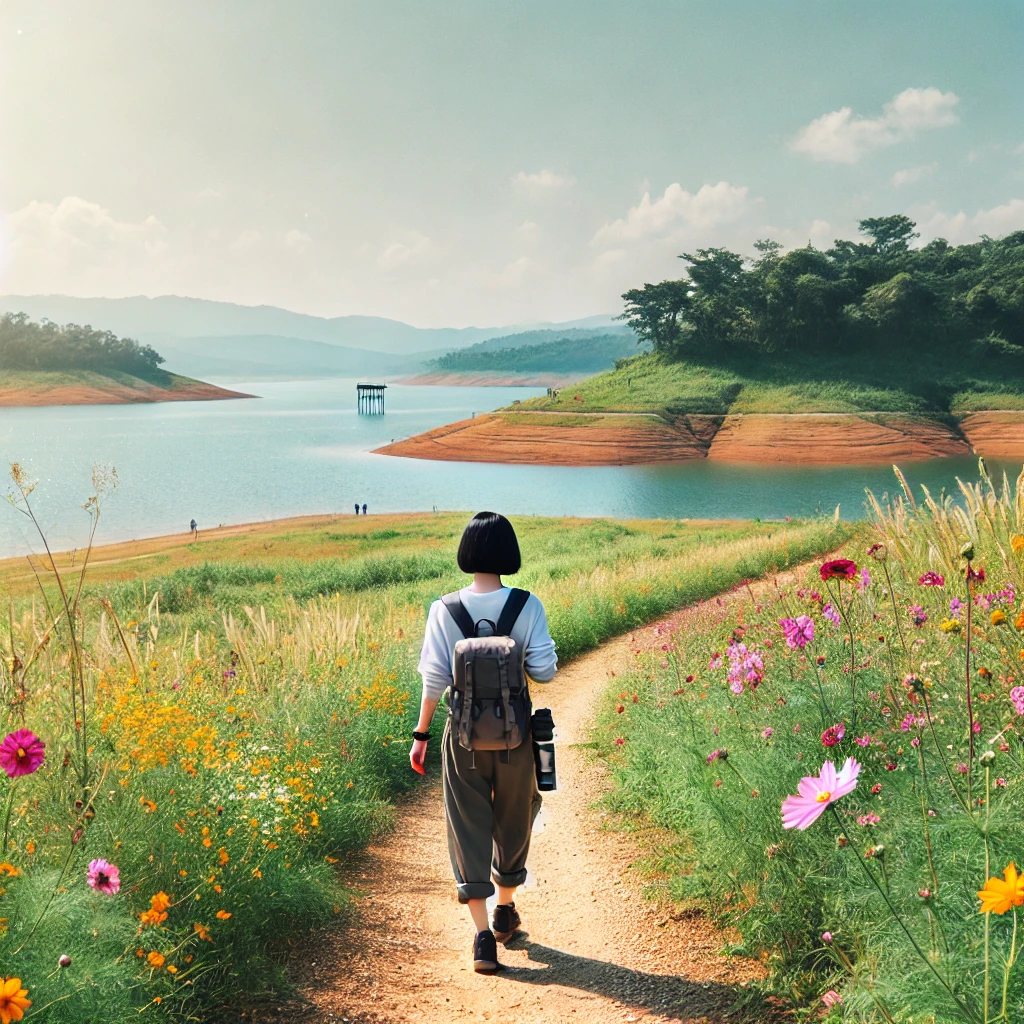ChatGPT:
The Vía de la Plata (Silver Route) is an ancient route in Spain with historical, cultural, and geographical significance. Despite its name, which translates to “Silver Way,” the term “Plata” does not refer to silver but is believed to come from the Arabic word “balata,” meaning “paved road.” This route was originally used by the Romans and later by various other groups over the centuries.
Origins and History
1. Roman Era:
• The Vía de la Plata was created as a Roman military and trade route, connecting the cities of Emerita Augusta (modern-day Mérida) in the south and Asturica Augusta (modern-day Astorga) in the north.
• It served to facilitate the movement of troops, goods, and communication within Roman Hispania.
• The route also played a role in the exploitation of mineral resources, such as gold and silver, in the northern regions of Spain.
2. Medieval Period:
• During the Middle Ages, it became an important path for Christian pilgrims traveling to Santiago de Compostela from southern Spain and beyond.
• It was also used by shepherds for transhumance, the seasonal migration of livestock.
3. Modern Significance:
• The route has been revitalized as a pilgrimage route and a cultural trail, blending historical landmarks, natural beauty, and opportunities for exploration.
The Route
The Vía de la Plata traditionally runs north-south across western Spain, traversing several regions, including Andalusia, Extremadura, Castilla y León, and Galicia. Key cities and landmarks along the route include:
1. Seville: Starting point in Andalusia, with its rich Moorish and Gothic architecture.
2. Mérida: A UNESCO World Heritage city, home to some of Spain’s best-preserved Roman ruins.
3. Cáceres: Known for its medieval old town and mix of Roman, Islamic, and Gothic influences.
4. Salamanca: A historic university city with stunning Renaissance and Baroque architecture.
5. Zamora: Featuring Romanesque churches and medieval charm.
6. Astorga: End point of the Roman route and a crossroads with the Camino Francés to Santiago.
Modern versions of the route often extend into Galicia, leading directly to Santiago de Compostela, the final destination for pilgrims.
Alternative Paths
Over time, variations of the Vía de la Plata have emerged:
• Shorter Detours: Pilgrims can join the Camino Sanabrés in Zamora to reach Santiago more directly.
• Regional Branches: Alternative paths link nearby towns, adding flexibility to the pilgrimage or travel experience.
Cultural and Natural Highlights
The route is known for:
• Roman engineering marvels, such as bridges, roads, and aqueducts.
• Diverse landscapes, including rolling plains, forests, mountains, and vineyards.
• Local cuisine, featuring dishes like jamón ibérico, tapas, and hearty stews.
The Vía de la Plata remains a journey rich in history, offering travelers a deep connection to Spain’s Roman and medieval heritage.
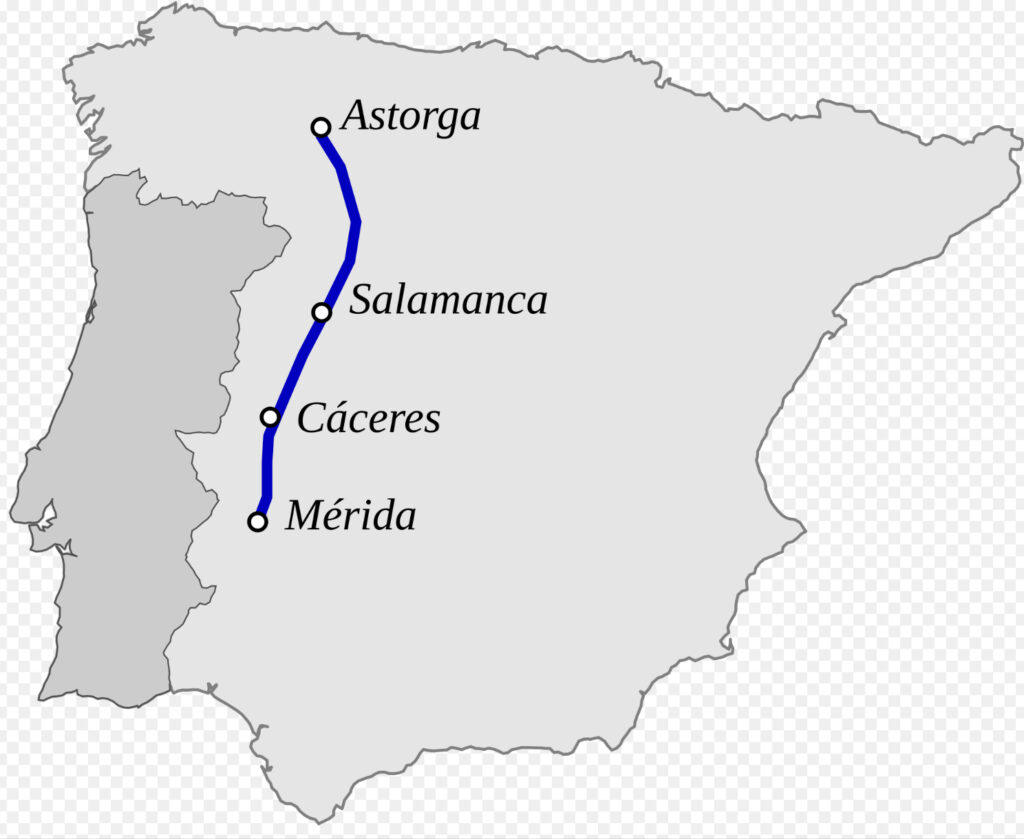
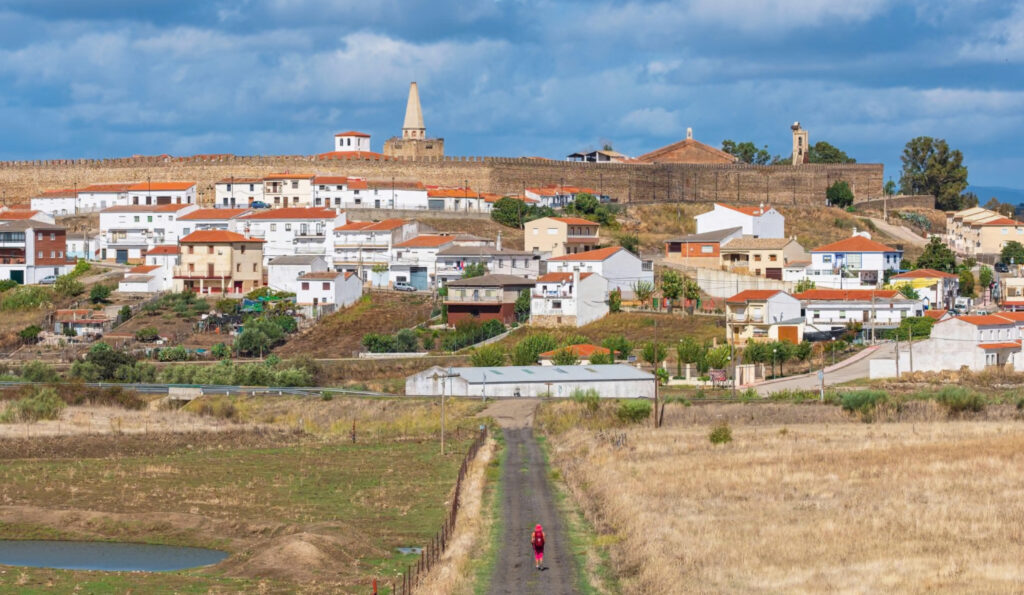
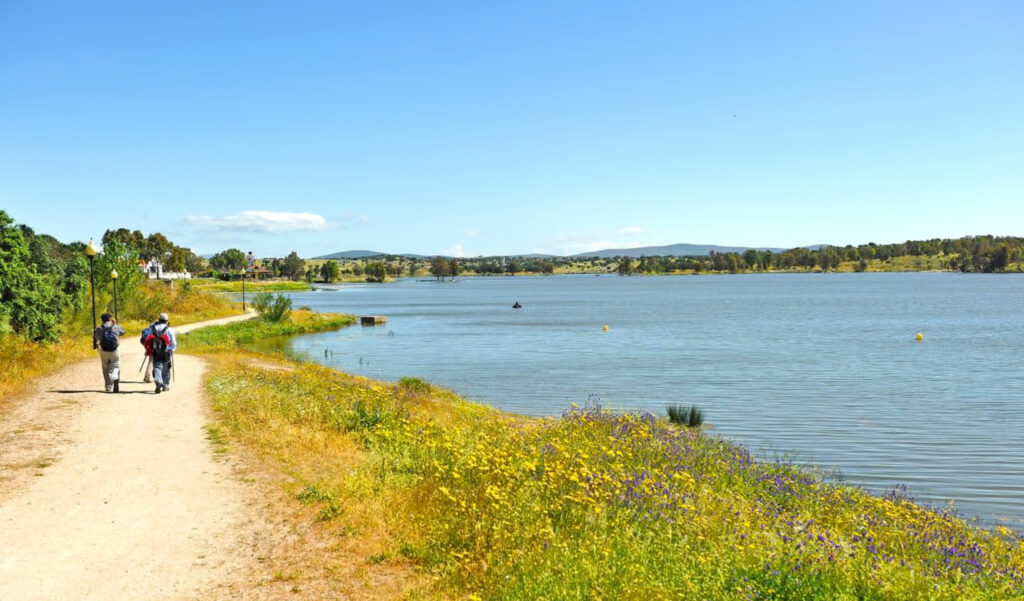
The Vía de la Plata spans a significant portion of western Spain, running roughly north-south through diverse geographical regions. Its estimated length varies depending on the exact route taken but is generally around 1,000 km (620 miles) from Seville in Andalusia to Astorga in Castilla y León. If extended to Santiago de Compostela in Galicia, the total distance reaches about 1,200 km (750 miles).
Geography of the Route
The route traverses a variety of landscapes, reflecting the richness of Spain’s geography:
1. Andalusia (Southern Spain):
• Starting Point: Seville.
• Terrain: Lowland plains of the Guadalquivir River Valley, characterized by olive groves, citrus orchards, and warm Mediterranean landscapes.
• Climate: Hot summers, mild winters.
2. Extremadura:
• Passes through towns like Zafra, Mérida, and Cáceres.
• Terrain: Rolling plains, gentle hills, and the Sierra de San Pedro mountains.
• Highlights: Dehesas (open woodlands of holm oaks) and large tracts of preserved natural areas.
3. Castilla y León (Central Spain):
• Includes cities like Salamanca, Zamora, and León.
• Terrain: Broad plains of the Meseta Central (central plateau) interspersed with mountains, such as the Sierra de Béjar and Montes de León.
• Climate: Continental, with cold winters and hot summers.
4. Galicia (Northern Spain):
• For pilgrims continuing to Santiago, this section crosses into Galicia.
• Terrain: Rugged hills, dense forests, and the lush green countryside typical of northern Spain.
• Climate: Oceanic, with mild temperatures and frequent rainfall.
Key Distances
Approximate distances between major stops along the route:
1. Seville to Mérida: ~200 km (125 miles).
2. Mérida to Cáceres: ~75 km (47 miles).
3. Cáceres to Salamanca: ~200 km (125 miles).
4. Salamanca to Zamora: ~65 km (40 miles).
5. Zamora to Astorga: ~100 km (62 miles).
6. Astorga to Santiago de Compostela (if continuing): ~250 km (155 miles).
Elevation Profile
• The route gradually gains elevation from the lowlands of Andalusia to the plateaus and mountains of northern Spain.
• Highest points:
• Puerto de Béjar (Sierra de Béjar): ~1,000 m (3,280 ft).
• Galician Hills: Altitudes up to ~800 m (2,625 ft).
The Vía de la Plata’s long distance and varied geography offer a mix of historical sites, natural beauty, and cultural experiences, making it a rewarding journey for hikers, cyclists, and pilgrims alike.
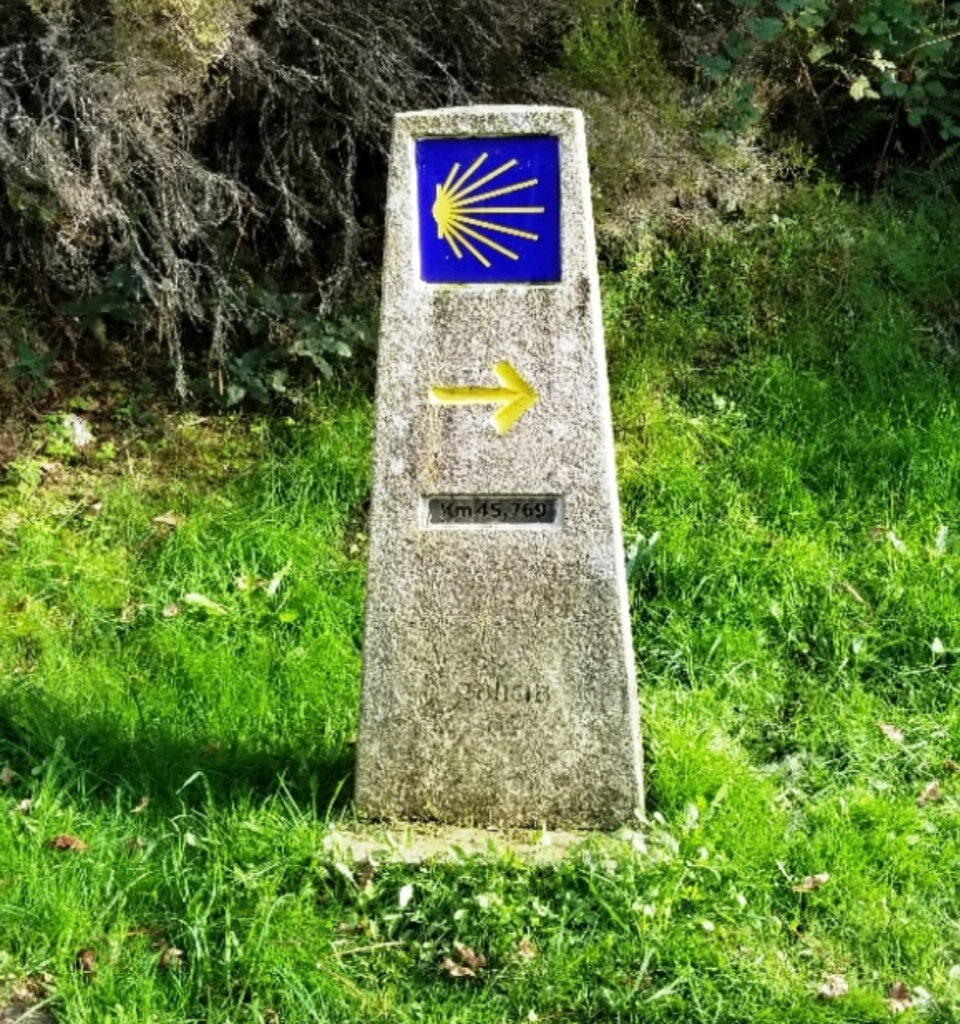
The Vía de la Plata is rich in historical monuments, many of which reflect the Roman, Moorish, and medieval influences along the route. Here are some of the most well-known historical landmarks:
Andalusia
1. Giralda and Seville Cathedral (Seville):
• A UNESCO World Heritage Site, this Gothic cathedral and its iconic bell tower (originally a minaret) mark the starting point of the route.
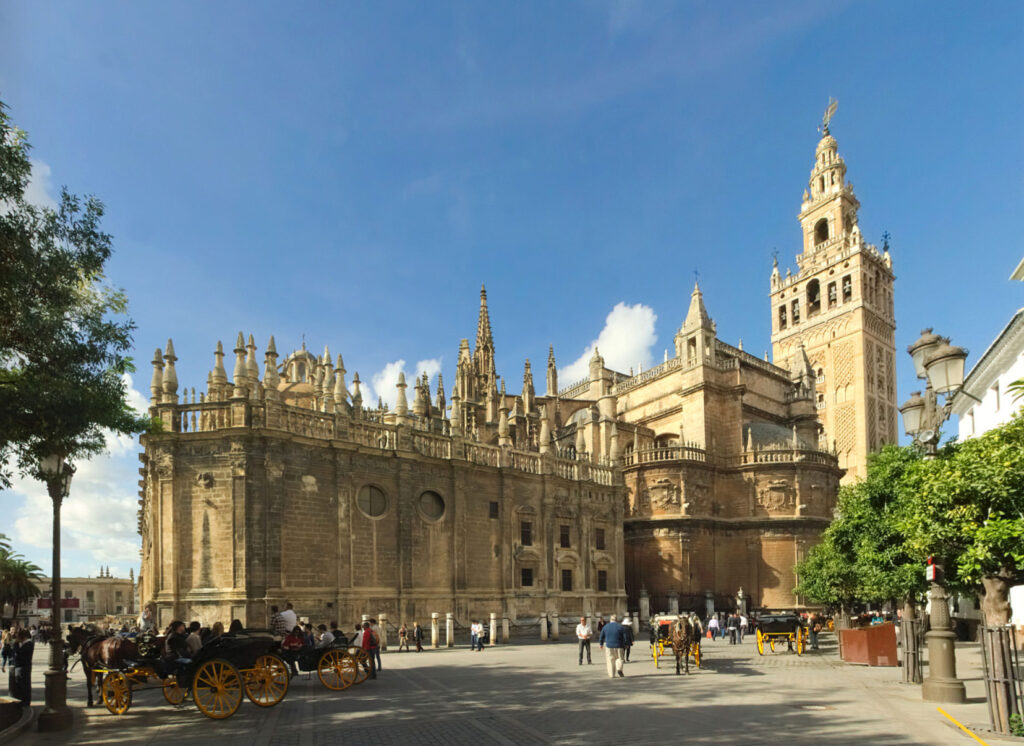
2. Itálica Roman Ruins (Santiponce):
• Located near Seville, these ruins include an amphitheater and mosaics from one of the first Roman cities in Hispania.
3. Alcazaba of Zafra:
• A well-preserved Moorish fortress that highlights the medieval history of the town.
Extremadura
4. Roman Theater and Amphitheater (Mérida):
• Part of the Archaeological Ensemble of Mérida, a UNESCO World Heritage Site, this is one of the best-preserved Roman theaters in Europe.

5. Temple of Diana (Mérida):
• An impressive Roman temple standing in the city center.
6. Arco de Cáparra (near Plasencia):
• A rare Roman triumphal arch that once marked a key waypoint on the route.
7. Old Town of Cáceres:
• A UNESCO World Heritage Site with a stunning blend of Roman, Islamic, Gothic, and Renaissance architecture.
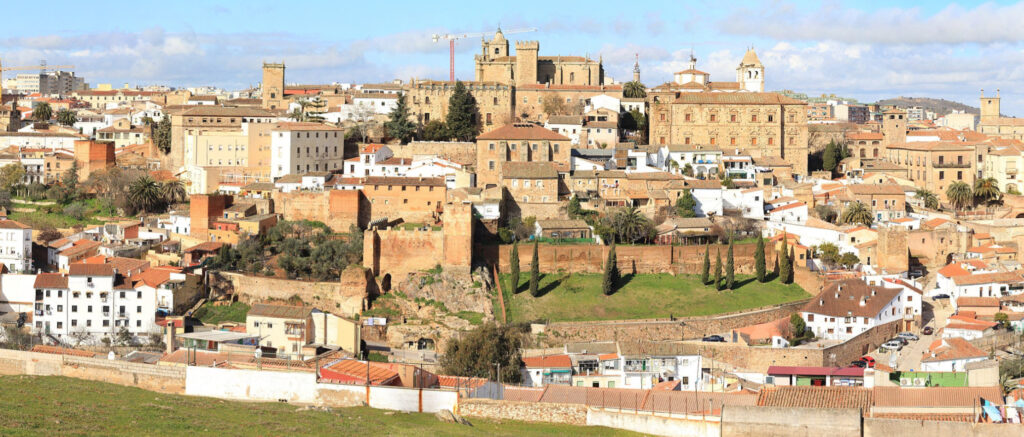
Castilla y León
8. Plaza Mayor (Salamanca):
• A grand Baroque square in Salamanca, often considered one of the most beautiful in Spain.

9. University of Salamanca:
• The oldest university in Spain, featuring an intricate Plateresque façade.
10. Zamora Cathedral:
• Famous for its Romanesque architecture and unique Byzantine-style dome.
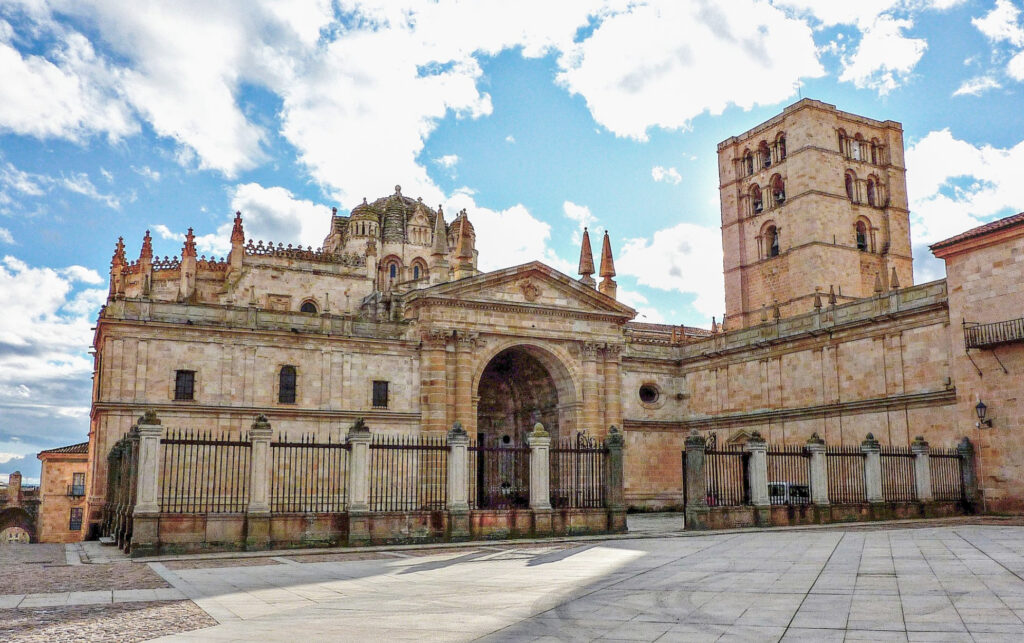
11. Astorga Cathedral and Episcopal Palace:
• The Gothic cathedral is complemented by the modernist Episcopal Palace designed by Antoni Gaudí.
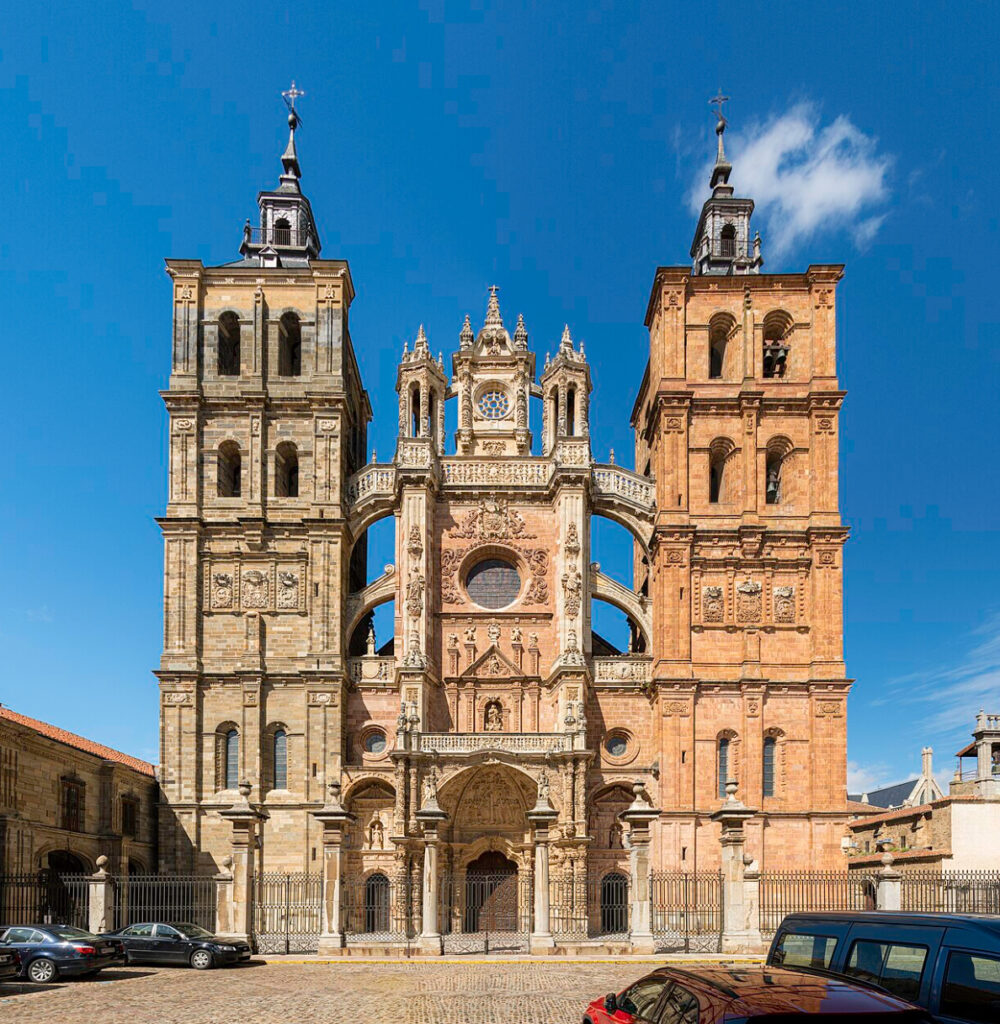
Galicia (if continuing to Santiago)
12. Santiago de Compostela Cathedral:
• The ultimate destination for many pilgrims, this iconic cathedral is a masterpiece of Romanesque, Gothic, and Baroque architecture.
Additional Roman Infrastructure
Throughout the route, you’ll find well-preserved Roman infrastructure, including:
• Roman Bridges:
• Puente Romano (Mérida): The longest surviving Roman bridge in the world, spanning the Guadiana River.
• Puente Romano (Salamanca): Another notable Roman bridge still in use.
• Roman Roads:
• Several original sections of the Roman road itself, particularly near Cáparra.
These monuments not only showcase the historical significance of the Vía de la Plata but also provide a vivid timeline of Spain’s cultural and architectural evolution.
The Vía de la Plata is not only rich in Roman archaeological sites but also features a wealth of Arabic (Moorish) monuments that reflect the centuries of Islamic influence in Spain. Here are some of the most significant Arabic sites along or near the route:
Andalusia
1. La Giralda (Seville):
• Originally built as the minaret for the Almohad mosque in the 12th century, it was later converted into the bell tower of Seville Cathedral. Its architecture showcases Islamic geometric design.
2. Reales Alcázares (Seville):
• A UNESCO World Heritage Site, this Moorish palace is a masterpiece of Mudéjar architecture, blending Islamic and Christian elements.
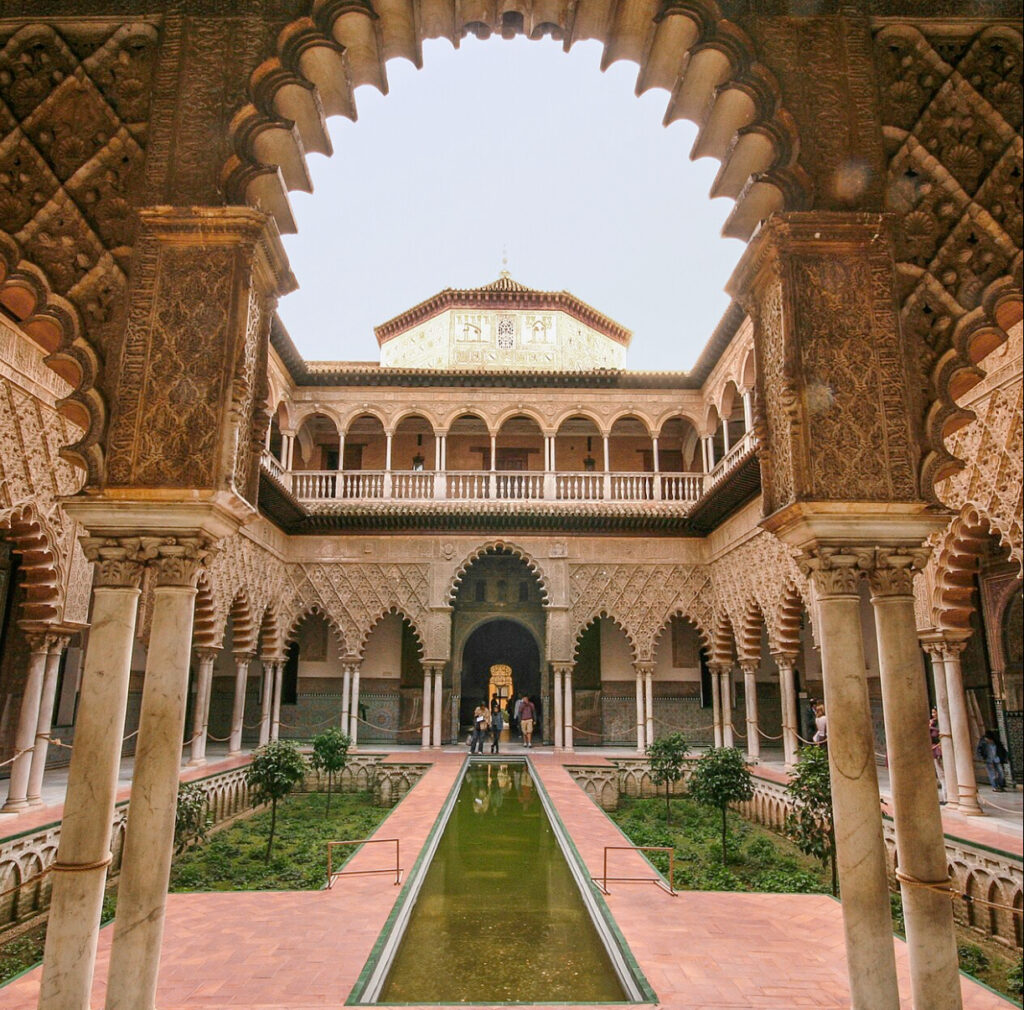
3. Alcazaba of Carmona:
• This fortress, built during the Umayyad Caliphate, offers panoramic views and insights into Moorish military architecture.
4. Alcazaba of Zafra:
• A Moorish fortress in the town of Zafra, showcasing the defensive strategies of the Caliphate of Córdoba.
Extremadura
5. Alcazaba of Mérida:
• A fortress built by the Umayyads in 835 CE, it is the oldest surviving Moorish fortress in Spain. It was constructed over Roman foundations and features a cistern that highlights the Islamic engineering of water management.
6. Medina Albalat (near Almaraz):
• The ruins of this Moorish town include remnants of a mosque, homes, and defensive walls, offering a glimpse of daily life during the Islamic period in Extremadura.
7. Old Town of Cáceres:
• While primarily medieval and Renaissance in appearance, Cáceres retains significant Islamic influences, including:
• The Bujaco Tower, originally part of the Moorish defensive walls.
• Portions of the old Alcazaba and Arab cisterns within the city.
Castilla y León
8. Walls of Salamanca:
• Originally built by the Moors, some remnants of the city’s Islamic-era walls are still visible, particularly in the southern part of Salamanca.
9. Aljama Mosque of Alba de Tormes (near Salamanca):
• Although now largely in ruins, this mosque was part of the Islamic heritage in the region before the Reconquista.
Cultural Legacy
Even in regions where physical Arabic monuments are fewer, the influence of Moorish culture is visible in:
• Architecture: Mudéjar styles (Islamic design blended with Christian architecture), especially in churches and fortresses built after the Reconquista.
• Agricultural Systems: Irrigation techniques and terraced farming introduced by the Moors are still evident in many areas.
• Place Names: Many towns and geographic features along the route retain Arabic-origin names, such as Guadiana and Almendralejo.
While the Vía de la Plata is best known for its Roman heritage, these Arabic sites and influences enrich the route, showcasing the diverse layers of history that shaped western Spain.
The Vía de la Plata traverses a variety of climates, from the hot Mediterranean weather in Andalusia to the cooler, wetter conditions in Galicia. The most suitable periods for walking the route are spring (April–June) and autumn (September–October) due to milder temperatures and more favorable weather conditions.
Climate Considerations by Season
Spring (April–June)
• Advantages:
• Comfortable temperatures: Daytime highs range from 15–25°C (59–77°F) in most regions.
• Blooming landscapes: The countryside, especially in Extremadura and Castilla y León, is lush and green.
• Longer daylight hours for walking.
• Challenges:
• Some rain in Galicia and northern regions, though generally less than in autumn.
Autumn (September–October)
• Advantages:
• Cooler temperatures after the summer heat, with highs of 18–25°C (64–77°F).
• Harvest season: You’ll encounter local festivals and fresh seasonal produce.
• Crisp mornings and generally dry weather in the southern and central regions.
• Challenges:
• Increased rainfall in Galicia and sometimes in Castilla y León by late October.
Summer (July–August)
• Not Recommended (especially for southern and central sections):
• Extremely hot temperatures in Andalusia and Extremadura, often exceeding 35°C (95°F) or more.
• Risk of dehydration and heat exhaustion.
• Sun-exposed terrain with limited shade in many areas.
• If you must walk during summer:
• Start walking at sunrise and finish by midday.
• Focus on northern sections (Zamora, Galicia), which are cooler.
Winter (November–March)
• Advantages:
• Cooler weather in southern sections like Andalusia and Extremadura (10–15°C / 50–59°F).
• Quiet trails with fewer travelers.
• Challenges:
• Risk of cold, rain, and even snow in higher-altitude areas like the Sierra de Béjar or Galicia.
• Shorter daylight hours.
• Some albergues (pilgrims’ hostels) may be closed during the off-season.
Best Time by Region
1. Andalusia and Extremadura:
• Best in spring or late autumn to avoid the intense summer heat.
2. Castilla y León:
• Spring and early autumn offer pleasant weather. Summers can be hot on the Meseta Central.
3. Galicia:
• Comfortable temperatures in late spring, summer, and early autumn, though rainfall increases as autumn progresses.
Overall Recommendation
The ideal periods for walking the Vía de la Plata are:
• Mid-April to mid-June for vibrant spring scenery and mild weather.
• Mid-September to late October for cooler temperatures, autumnal landscapes, and cultural festivals.
